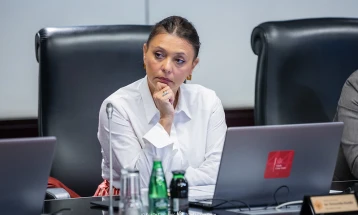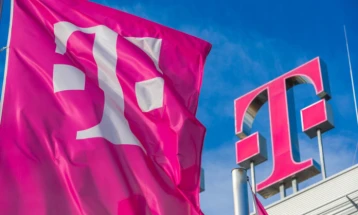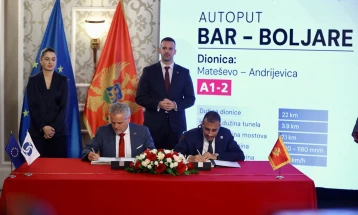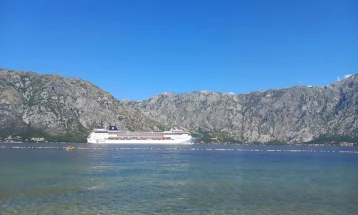Knezevic: Risk Capital of Banks Will Be 5 million Euros by the End of Next Year
- Knezevic: Risk Capital of Banks Will Be 5 million Euros by the End of Next Year
- Post By daniloc
- 12:45, 15 januar, 2002

Podgorica, (Montena-business) – By changing and adding the Law on Commercial Banks that will be suggested by the Central Bank of Montenegro (CBMN) and by the Ministry of Finance to the Government during this week, the amount of risk capital, which was DEM 5 million, will grow to 5 million Euro by the end of next year.
Goran Knezevic, assistant to the general director for controlling banks, said to Montena-business that increase of risk capital would be successive, because monetary organs wanted gradually development of commercial banks.
“Proposed changes and additions of the Law on Banks, which is harmonised with European regulations in this sphere, refer to that the banks will have to provide 3 million Euro by the end of this year, and by the end of next year 5 million Euro of risk capital” said Knezevic.
Commenting the bankruptcy of 4 big Serbian Banks, Knezevic said that it is possible to have the same scenario for some banks that have their head office in Montenegro.
“The bankruptcy is a form of care for deposers and clients of these banks, because the final result of it will be continuation of work or liquidation. CBMN doesn’t have some developed programs for employing workers from these banks in the case of bankruptcy or some funds for this purpose, but the bank only relies on present programs of the Ministry of Labour and Social Care and on the working regulations” said Knezevic.
Knezevic emphasized that 1,500 employees in Montenegrin Bank System is much less than the number employed in 4 big Serbian banks, which shows that dimensioning of the problem is an advantage of Montenegro. He added that a special program of employing employed in the Montenegrin Bank System after a possible bank bankruptcy would mean privileging banks comparing to companies.
He said that there was a rigid interpretation of the Law on Commercial Banks, according to which the banks should have stopped the work after 11 November 2001, which was the term for harmonising, and that it was necessary to change the Law.
“CBMN concluded that such an interpretation was not usual, and that because of delay in forming the Council of CBMN and the situation in the Montenegrin Bank System, the work of commercial banks should have been harmonised with new regulations. We expect that already in February changes and additions of the Law were realised, so the term for harmonising will be prolonged until the end of that month” said Knezevic.
At the meeting of CBMN’s Council before New Year, as he said, according to new regulations the working licence was also given to Ekos Bank. 5 other banks will have to fulfil the norms on risk capital and other business parameters, founding acts, experts qualifications, working experience, then norms on property of the members of Managing Board, on bonification of shareholders and revisers, on technical and personal work abilities and on the business plan for next 3 years.
The branches of Serbian Banks in Montenegro, claims Knezevic, were controlled by CBMN thorough their reports on work, which showed that the level, structure and time harmonising between property and obligations, and also, liquidity were satisfactory in these banks.
He said that these branches had nothing to do with the bankruptcy in domicile banks, and that CBMN last week sent its controllers to these branches in order to make summation of the situation in them. Instead of branches, says Knezevic, in Montenegro in the future there will be affiliations of foreign banks, which will work under the same conditions as Montenegrin banks and under full control of CBMN.
Speaking about enforced management in Montenegrobanka, which will last until 9 April, Knezevic said it would result in selling the bank or providing new capital for the bank, if the plan, which was performed by CBMN, succeeded. If not, as he said, Montenegrobanka will face also with the bankruptcy according to the Law on Banks’ Insolvency, which was adopted recently.
“We started to manage this bank when it was not able to pay the obligations of DEM 8 million, and its property was smaller than obligations. At the moment, the bank has improved it’s liquidity, which is about DEM 15 million, but it still can’t be solvent without providing new capital or dislocating the position that refers to the foreign debts before sanctions, and old savings in foreign currencies from the balance, and maybe without both measures” claims Knezevic.
He said that total value of the bank debtors’ property, which was going to be sold in order to increase solvency and liquidity of Montenegrobanka, was about DEM 25 million. There is a certain interest for some objects, but the investors wait for prices to fall, which is the reason that the sales have not started yet.
Regarding complaints by the debtors about extremely high interest rates on credits approved by Montenegrobanka, Knezevic said that it should have come from those who signed the contracts on credit.
“From today’s point of view the rates are high, but the debtors haven’t realised that at the time when they took over obligations or they hoped that they would not have to pay it. The total debt is overestimated now, because of the interest rates, but the responsibility for that is on the debtors and previous management of Montenegrobanka as well” said Knezevic.
af/bd












